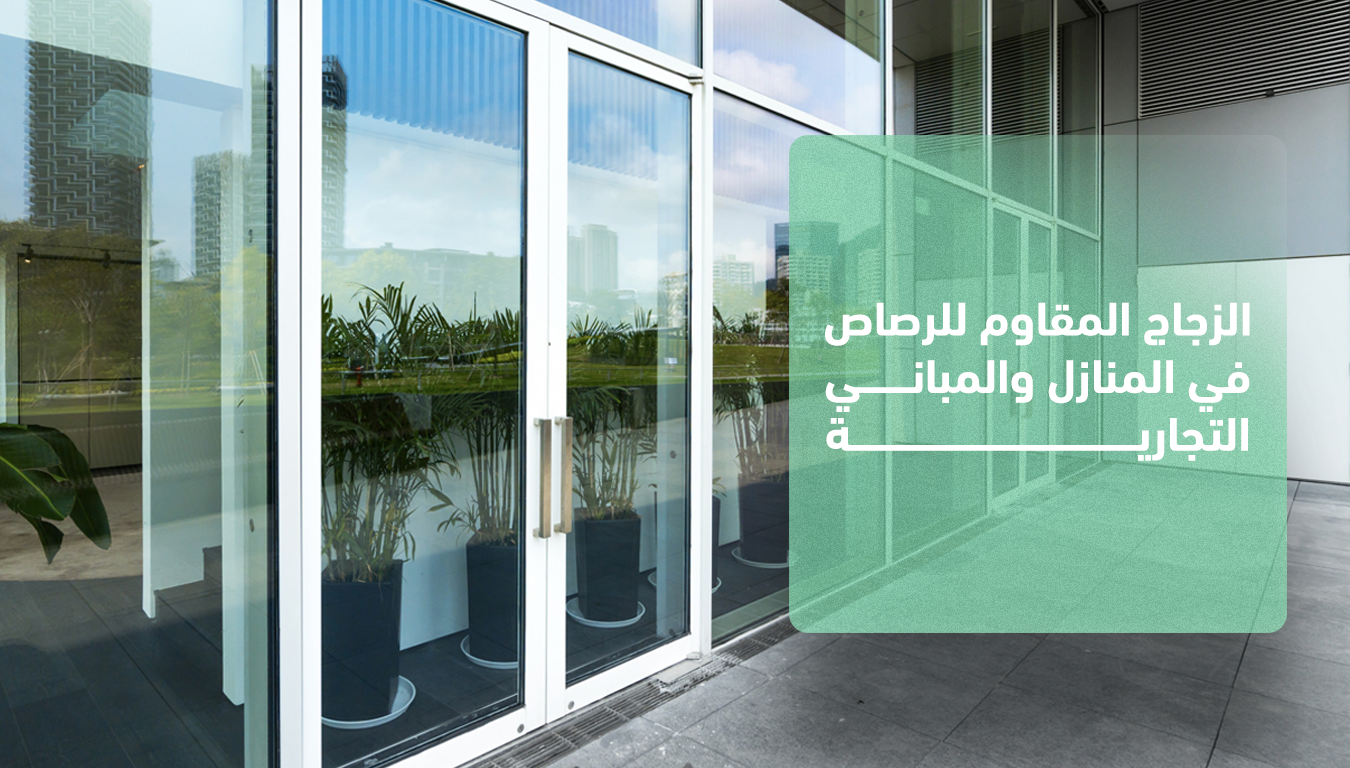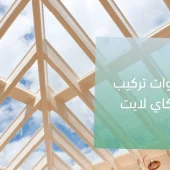Welcome to the world of luxury and advanced technology.
where safety is epitomized by innovative and modern bulletproof glass.
And now.
let’s explore the power of this glass.
We’ll take a detailed journey into the world of innovation and design.
where safety meets elegance, technology meets design.
technology meets design.
What is bulletproof glass?
Bullet-resistant glass or laminated glass is a type of glass that is designed to withstand the impact of bullets and keep the place where it is used safe.
It is manufactured using special techniques to make it able to withstand and absorb bullets effectively and safely.
Bulletproof glass consists of several layers of hollow glass separated by layers of highly resistant plastics or polymers (polyvinyl butyral (PVB)).
The layers are fused together using high heat and pressure, ensuring that the glass remains intact even when shattered.
Types of bulletproof glass offer different levels of protection.
depending on the thickness and number of layers used.
It can withstand bullets, explosions, and forced entry.
making it an excellent choice for high-security applications.
Types of bulletproof glass:
Bulletproof glass is made with advanced techniques that involve multiple layers of highly resistant glass and plastic.
There are different types of bulletproof glass.
Here are some common types:
-
Multilayer polymer glass (MPF):
This type is made up of multiple layers of polymers such as polyvinyl butyral (PVB) and high-strength plastics.
They are compounded to achieve high upward strength and bullet resistance.

-
Bulletproof acrylic glass:
Bulletproof acrylic is another option.
It consists of a clear acrylic plastic that is lightweight and durable.
It is a popular choice for bulletproof applications due to its ease of installation.
Acrylic glass offers excellent optical clarity and is easy to shape and customize.
It is also durable and shatter-resistant.
making it an ideal choice for bullet-resistant applications.
What’s more
its polished clear edges add a touch of elegance to any installation.

-
Bullet-resistant borosilicate glass:
Borosilicate is used in the formation of glass layers to achieve high bullet resistance.
It has excellent mechanical and chemical properties.
-
Bulletproof crystal glass:
The crystal is reinforced with bullet-resistant materials to improve its ability to withstand pressure and shock.

-
Bulletproof wire glass:
Wire fibers are included in the glass to increase its strength and resistance to bullets.
making it more resistant.
-
Bulletproof liquid crystal glass:
Used in some military applications.
It contains materials such as liquid crystal that act as a means of absorbing energy from lead.
-
Bullet-resistant composite glass:
It is manufactured using composite technologies.
where layers of glass are combined with highly resistant polymeric materials.
This allows for high mechanical strength and effective bullet resistance.
-
Bullet-resistant fiber glass:
In some cases, bullet-resistant fiber glass is used to enhance the strength and impact resistance of the glass.

-
Bulletproof ceramic glass:
It is characterized by durability and chemical resistance.
and can be used in some industrial and scientific applications.
-
Bulletproof quartz glass:
It is used in some special applications where the chemical and thermal properties of quartz are important.
-
Bulletproof crystal glass:
It can contain crystals to enhance its hardness and bullet resistance. The right type of glass should be chosen according to the needs of the application.
whether it is for military, industrial, personal safety.
personal safety.
or property protection.
These types are designed with different levels of glass thickness and layer configurations depending on the specific security and protection requirements.
-
Air gap glass:
Air Gap Glass is a type of bullet-resistant glass that incorporates an air gap between two layers of glass.
This design enhances the glass’s ability to absorb the impact of bullets and provides additional protection against threats.
The Air Gap Glass structure provides an optimal balance between strength and flexibility.
Advantages of using bulletproof glass for buildings and institutions:
There are many advantages to using bulletproof glass in buildings.
Among them:
Personal safety.
and safety:
Provides protection for individuals from bullet threats.
making it ideal for use in security buildings.
such as banks or police stations.
Protection from breakage and shattering:
It has high mechanical strength and high impact resistance.
which reduces the likelihood of shattering and increases its resistance to breakage.
Design flexibility:
It can be manufactured in multiple designs and can be customized to suit different needs.
including different colors, shapes, and sizes.
UV-resistant:
It can have layers that make it UV-resistant.
which increases its lifespan and maintains its transparency.
It is used in the military industry:
It is widely used in the military industry to protect vehicles and vital structures from the effects of bullets.
Resistant to environmental factors:
It can be resistant to environmental influences.
making it suitable for use in harsh conditions.
Organize lighting levels:
Bulletproof glass can be designed with specific layers to control the reflection and absorption of light.
allowing lighting levels in buildings and facilities to be regulated.
Thermal and acoustic insulation:
Thermal and acoustic insulation materials can be incorporated into the manufacture of bulletproof glass.
improving the thermal efficiency of buildings and providing additional protection from external noise. Also learn about: A comprehensive guide to the types and uses of reflective glass
Resistance to chemical effects:
Bulletproof glass can be manufactured with materials that withstand chemical effects.
making it suitable for use in chemical industries and harsh environments.
Achieve high levels of transparency:
Despite its high levels of resistance.
Bulletproof glass can be manufactured in a way that achieves high levels of transparency.
ensuring good visibility without much loss of optical efficiency.
Integration with security systems:
It can be effectively integrated with modern electronic security systems.
allowing it to be part of comprehensive security solutions.
Validation of quality standards:
Bulletproof glass is tested and certified according to international standards to ensure its effective and reliable performance.The use of different types of bulletproof glass enhances safety and security, making it an integrated and effective option in achieving the required protection in various industrial and commercial applications.
Bulletproof glass applications:
Using bulletproof glass has several advantages that make it an excellent choice in a wide range of applications.
Here are some of the main advantages:
- Used in museums and galleries to protect valuable art pieces.
as well as in hospitals and health centers to provide additional protection for medical facilities. - Used in government facilities and places of high importance to maintain security and prevent unauthorized access.
- Military use.
Used in military vehicles and strategic centers to provide protection against bullet attacks. - It is used in security facilities and vital public buildings to provide security.
- It is used in the windows and facades of government buildings and security institutions to enhance personal protection and maintain the safety of individuals inside these buildings.
- Banks and financial institutions Bulletproof glass is used in windows and places that require a high security system inside banks to protect employees and customers from security threats.
- It is used in the windows and compounds of tanks and military vehicles to provide protection for the crew inside the vehicle.
- It is used in the windows and glass facades of hotels and luxury buildings to enhance the safety and protection of guests.
- It can be used in homes or offices that require high levels of security and personal protection.
- Used in scientific laboratory windows where there is a risk of exposure to hazardous substances.
- It is used to enhance security at airports and vital terminals where it handles a large flow of masses and logistical traffic.
- Used in chemical industries or other industrial environments where there may be threats to safety.
- Integrates into room windows for surveillance and security systems to provide protection for observers and equipment.
- Sports venues and large events to provide additional protection during sporting events or large events that attract large crowds.
- Commercial venues and malls for enhanced security and theft prevention.
- It is used in infrastructure and government projects to provide additional security and ensure the safety of facilities.
Top Frequently Asked Questions
How is bulletproof glass made?
Bulletproof glass can be manufactured with materials that withstand chemical effects.
making it suitable for use in chemical industries and harsh environments.
What is bulletproof glass?
Bulletproof glass consists of several layers of hollow glass separated by layers of highly resistant plastics or polymers (polyvinyl butyral (PVB)).
The layers are fused together using high heat and pressure, ensuring that the glass remains intact even when shattered.
Conclusion
Types of bulletproof glass offer different levels of protection and safety.
And It appears as an artistic and engineering innovation that is characterized by its ability to achieve high levels of protection, security and transparency at the same time.
This is achieved by combining multiple layers of glass and highly resistant plastics.
At IW Glass, we have advanced manufacturing techniques and an integrated team of engineers, designers and technicians to fulfill all your requirements. See our work Contact us.




